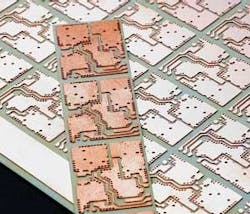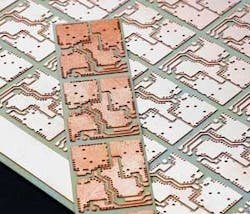Processing ceramics
Jena, Germany - Many electronic circuits use Al2O3 ceramic substrates on which printed conductors and electronic components are mounted. In making the components, separating the substrates from large ceramic plates is a problem. Typically, the process of choice is laser sublimation, in which a laser beam melts and produces a hole in the ceramic material at defined points to generate perforation lines along which the ceramic material can be broken. This method produces chips with serrated edge profile.
A related issue is that of high heat input and flashing along the edges. When the plates are separated, the material tends to break along the edges and dust particles are released. This situation could be problematic in areas with critical environmental conditions or compact power modules. Therefore, the separation of the material must occur at the beginning of the process and increases handling in subsequent steps.
With these requirements in mind, Jenoptik Automatisierungstechnik GmbH has developed a new method for separating brittle materials, such as Al2O3 ceramics, and also built the machine on which this method can be implemented. Using this method, called thermal laser beam separation (TLS), defined parts of the surface of the ceramic substrate are heated by a CO2 laser. This produces compressive stress in the topmost layers of the material, which, however, does not lead to destruction. Directly following the laser beam is a cooling system that causes sudden local cooling of the laser track. The resulting high temperature gradient generates tensile stress above the strength limit of the material in the outer layers.
Consequently, defined cracks form in the ceramic material along the lattice structure. This scribing generates a line of pre-weakening for subsequent break-up. The material does not melt and a continuous cut is obtained. Depending on the material, cutting speeds up to 300 mm/s reportedly are possible.
According to the company, this method produces high-quality, high-strength cut edges in Al2O3 ceramics and eliminates finishing steps such as grinding. The method does not involve ablation, so no deposits of molten material or any kind of sediment form on the ceramic surface.
In contrast to laser sublimation, few particles are released in breaking the ceramic material. This makes it possible to put the breaking of ceramic plates at the end of the process and substantially reduces the required handling.
For more information, visit www.automation.jenoptik.de

